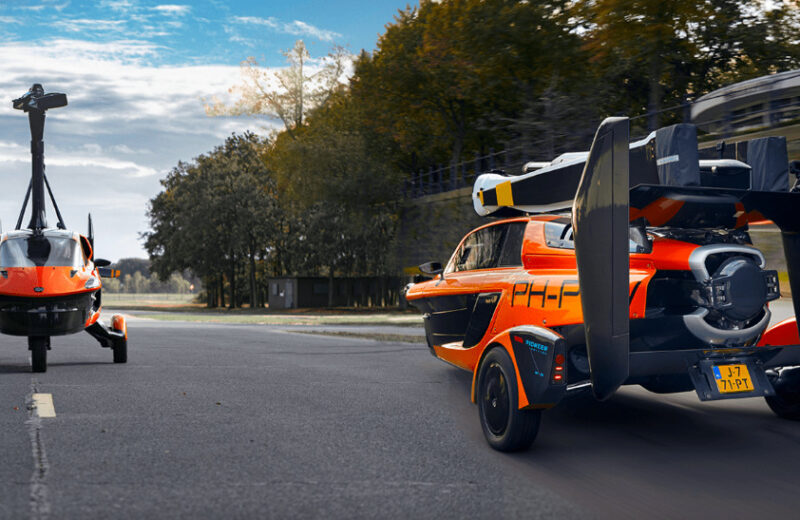PAL-V sets sights on Q3 for full EASA Type Certification

Flying car OEM, PAL-V is aiming to be EASA Type Certified (TC) by the third-quarter (Q3) of this year, according to Andy Wall, sales director, UK, Ireland and North America.
The firm, founded back in 2008, has now progressed through 93% of the certification process with plans to begin producing between two and three aircraft per week from early next year. The Netherlands-based OEM has also agreed an undisclosed deal with a large automotive manufacturer to assist in scaling production.
“Making a flying machine fly isn’t the biggest challenge here,” Wall told Revolution.Aero. “To a layman making an aircraft seems like quite a gargantuan task. In reality the method of utilising an aircraft and making it work on the roads is where the challenge lies.”
It has been an interesting year so far, said Wall, “quietly progressing” regulatory approvals with EASA. “The main challenge being, of course we are going for full type certification, it is not an experimental or getting a temporary permit to fly somewhere. We went, early on, down that route which means we can’t say: ‘This variant flew last week, look at us’. But it does gain years of, if not, total credibility with the regulators.”
A PAL-V will be capable of carrying two persons 400km by air at an economic cruise speed of 140kph and 1315km by road where it has a maximum speed of 160kph. The 200hp combustion engines propel the aircraft up to its maximum operating altitude of 3500m, where it can fly for 4.3 hours at maximum take-off weight (910kg).
Designing an aircraft is complex and expensive. Add to that a flying car has to be road legal too. PAL-V first flew a prototype, PAL-V I, in 2012 — it was basically a combination of the Dutch three-wheel Carver and a gyrocopter. “We have come a long way from there but we essentially started with an aircraft that was simple to fly,” said Wall.
Then the team began the process of conforming parts to regulations for both air and road. “One example, if you extract the fuel tank from a flying machine and take it to the car regulators they just stand there, laugh and say: ‘That doesn’t get any approval for a car.’ So you significantly modify the tank to meet regulations that complies with the car regulations. At some point you’ve done that throughout the vehicle from tires to suspension. You then turn back up with your car to EASA and they say: ‘What is that?’
“It is not that the regulators have been awkward it just doesn’t fit. It was a square peg in a round hole,” added Wall. So, PAL-V is being certified under existing regulations with some caveats [??]. “It is a gyrocopter in essence, so the challenge for us was creating, with EASA, a framework that allowed us to modify existing standards. Primarily around accepting new road-compliant components that had not been used before in aerospace.”
PAL-V recently conducted ground testing (see above), one variable analysed is ultimate load on the rotor system. This test involved driving a Nissan Navara pickup, with added water tanks and rotor system, weighing nearly four tonnes up and down a runway at Twente Airport, Netherlands. Wall said, despite the weight with the system at maximum rotation the team experienced some lift.
PAL-V is also developing an app to assist owners in navigating their journey. Wall noted there is nothing new in terms of technology, but this is the first time it has been combined in this way. “We have our phones in our hand for 90% of the day it seems.” An example, could be a drive from Oxfordshire to Kent, which could involve flying down to Lydd, London Ashford Airport.
“Just as you would with Waze or Google Maps you will be able to access the mapping software. You have live access to weather and an option change the variables. You can say: ‘I need at least 3000ft cloud base, for example. You put the parameters in and it will extrapolate data. It might say there is a weather front still hanging around over Kent, so we suggest you drop down to London Biggin Hill and drive the rest of the journey,” said Wall. In flight, the app also works with the aircraft’s navigation system and can proving direction to nearest airports and provide live data on surrounding activity.






